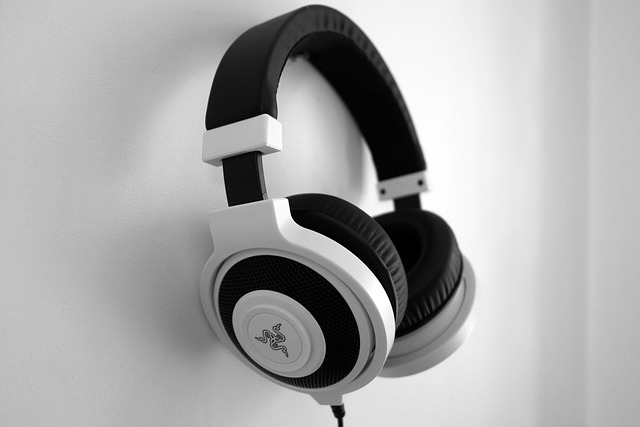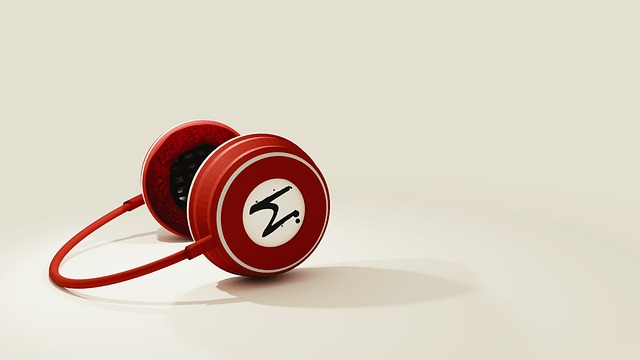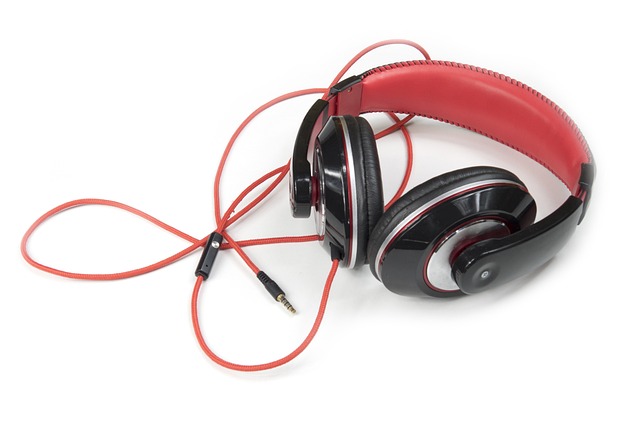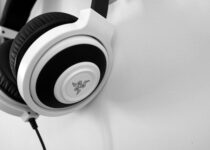How to Measure Headphone Decibels?
No matter how you listen to music or watch movies, if you’re listening with headphones, you’re probably aware of just how loud things can get. But just how loud is too loud for headphones?

Whether you’re trying to avoid getting a headache from your headphones, or just want to make sure you’re not blasting music so loudly that you’re disturbing your neighbours, it can be hard to know just how loud your headphones are actually playing.
In this article, we’ll show you how to measure headphone decibels and explain what makes listening to them too loud and we’ll take a look at what makes listening to loud headphones bad for your ears.
Finally, we’ll give you some tips on how to adjust the volume if it’s getting too loud for your comfort.
What Makes Listening to Loud Headphones Bad?
Hearing damage can occur from listening to loud music or headphones at higher volumes. In order to protect your ears, it’s important to learn how to measure headphone decibels and understand what makes listening to loud headphones bad.
Listening to loud headphones can be harmful to your ears. When you listen to music or audio through headphones at high volume, the pressure inside your ear can increase dramatically.
This increased pressure can cause temporary hearing loss and tinnitus and it can also cause permanent damage to your ears.
We have listed some of the hearing problems. Let’s take a look
Tinnitus:
Tinnitus is a ringing in the ears that can be intermittent or constant. It’s often described as a “ringing in the ears,” “whistling noise,” “hissing sound,” or “high-pitched noise.”
Imbalance:
Listening to loud headphones for an extended period of time can lead to an imbalance in the ear canal. Loud headphones also cause fatigue and stress because they cause your eardrums to vibrate excessively.
Sensitivity:
Loud music or sound of any type causes ear sensitivity and You can hear any sound louder than it actually is.
Hearing loss:
Noise can even cause hearing loss as it damages sound-receptive nerve fibres which are in the inner layer of ear.
How Loud is ‘Too Loud’ for Headphones?
A common question that is asked by headphone users is “how loud is ‘too loud’ for headphones?” This question is important to ask because it affects the amount of time that a headphone can be used without risking noise-related hearing loss.
But are you still unsure how to measure headphone decibels? Then keep reading.
85 dB is not risking volume. However, it is recommended to listen that a volume level of 85 dB for only 8 hours potentially is not noise-related hearing loss.
The chart shows that anything below 85 dB isn’t is not risking volume to your hearing. For this reason, you can listen to audio that’s rated at 85 dB for up to 8 hours without risking hearing loss.
While you may not realise it, listening to headphones at 105dB and above for long periods of time is like damaging your ears as it is loud enough like someone is shouting at you for hours.
Compare each decibel-rated noise level with other sounds in your environment. For example, 85 dB sounds similar to city traffic full of cars, a busy crowded area.
However, that isn’t always accurate, so you could still be at risk of hearing problems.
We’ve compiled some surefire ways to check if your headphones are too loud in next section. Keep reading to find out more
6 Ways to Check if Your Headphones are Too Loud
You just want to know how to measure headphone decibels? Just because you think that your headphones are too loud. Let’s have a look
We will look at these 6 ways to check if your headphones are loud or not.
- Carry out the ringing test
- Hold your headphones out in front of you
- Check the volume control
- Ensure you don’t struggle to hear people around you
- Look out for signs of hearing loss
- Measure the sound level with a Sound Meter
1. Carry out the ringing test
An ear-ringing sensation feels like whistling, hissing, buzzing, or even clicking, and it can occur in one or both ears. People around you can’t hear it.
The ringing is not always tinnitus, that could be phantom ringing which you are experiencing when you are in a quiet environment.
In this test, you’ll be able to determine if you’re already experiencing ringing in the ears without even realising it.
For this test, you will need a pair of foam earplugs and a peaceful place to sit. For 2-3 days, stop using your headphones for this test.
Now you need to go into a quiet room, place the earplugs in your ears, and try to concentrate on your hearing. be relaxed completely, focus on your breathing and concentrate, and sit completely still.
While you are in the silence., you would hear a slight ringing in your ears which is Your baseline level.
Next, you will start using your headphones as you used to.
Now In the afternoon, redo the test in a silent space again. If you are hearing the ringing more loudly than the last test, then the headphones are too loud.
Keep doing this test on a regular basis to keep track of the effect of your volume level. as your baseline level is becoming intense then it is your sign to reduce the volume.
2. Hold your headphones out in front of you
Now let’s come to test number 2 which you can try if you are still not satisfied.
One way to determine whether your headphones are too loud is to while you are listening, remove them and then hold them out in front of you and listen to them at a volume you usually listen to.
Can you guess the song which is playing? That means it’s too loud. Now repeat the process by decreasing the sound of volume.
3. Check the volume control
Headphones are meant to provide a listening experience that is comfortable and enjoyable and you might want to listen to your favourite music at high volume but you also don’t want to lose your hearing. Right?
Then it’s time to take a look at the volume control.
While it’s easy to crank up your volume when your favourite track begins to play, it’s important to establish good habits by keeping the volume below 60%.
It is too loud if it reaches over two-thirds or over 60% of the volume control. If you monitor those volumes regularly, you can prevent hearing loss from occurring which does not occur overnight
The sound level may be louder than the recommended 85dB even at 60% volume, depending on the impedance of the headphones. So use a sound metre to measure the sound correctly.
4. Ensure you don’t struggle to hear people around you
If you are having difficulty hearing sounds in your environment when wearing headphones, then your volume is too loud. You should adjust the sound until you can hear someone in the room.
Reduce the volume until your surrounding people don’t sound muffled.
If you are wearing noise-cancelling headphones, this test won’t work.
5. Look out for signs of hearing loss
If you listen to your headphones at a high volume, you can damage your ear cells and can cause many hearing difficulties, which can lead to loss of hearing.
here are some symptoms to see if you have any hearing issues.
Symptoms to look out for include:
- Ear ringing, clicking, hissing, or even buzzing
- Rowdy venues make it difficult to hear
- Sounds that are muffled
- Turning up the volume more and more
6. Measure the sound level with a Sound Meter
Decibel meters measure sound levels in decibels (dB), so you can use the decibel chart above to see if your headphones are loud enough.
Even though 94 dB is the average sound level for personal audio devices, it is still louder. The sound level should be 10 – 20 decibels below because that will provide you with much relief over time.
The decibel meter will show the current dB on its LED screen automatically when you place the microphone directly into one of the headphones’ ear cups.
The following apps can turn your gadgets into virtual volume-measuring devices if purchasing a sound meter is beyond your budget.
For Android, you can use the sound metre app and for ios you can use decibel X lately for windows Decibel metre is recommended
Also here take a look how to sleep with headphones.
How to Wear Headphones Without Damaging Your Hearing
If you’re like most people, you probably don’t think about sound levels until something goes wrong. That’s when you realize that blasting your music at full volume can actually be harmful to your hearing.

While it may seem counterintuitive, the best way to avoid hearing damage is to use headphones sparingly.
Here are some tips for you to use your headphones in a way that you won’t hurt you.
Be faithful to the 60/60 rule
Listening to your favourite track without increasing volume might look upsetting to you but there is nothing greater than health.
To avoid damaging your hearing, always adhere to the 60/60 rule. This means that you should listen to music at a level that is no louder than 60% volume on your headphones.
Follow the tips as it is suggested by doctors. And it will be easy to follow as your device gives a warning msg if you increase the volume up to 60%.
Take regular breaks from listening to music and audiobooks to allow your ears to rest and equalize.
Utilise volume limits
You can also limit your exposure to loud music or sound by utilising volume limits. There are basically two types of volume limits. One is built-in and the other is setting-based volume limits.
We will take a look at both of them.
-
Built-in volume limits
There are some headphones which are created with built-in volume limits, where the standard sound level is 85dB and that is set, making them more suitable for kids and people with sensitive hearing.
There are headphones with built-in volume limits that cannot be bypassed; that means you can not adjust the settings to make the volume louder than 85 dB.
-
Settings-based volume limits
And here comes the headphones with setting-based volume limits.
You can set volume limits directly from your audio source, whether it’s a smartphone or tablet, if you don’t want to buy new headphones with built-in limits.
Here’s how you can adjust the volume limit on your iPhone and Android:
How to enable volume limits on iPhone
To enable volume limits on an iPhone, follow these steps.
- open the Settings app and select sound and haptics
- Keep looking for headphone safety and Make sure to select it.
- Here comes the main part, now set the sound level at 85dB by toggling the button of Reduce Loud Sounds.
- You are done!
How to enable volume limits on Android
Now, enable the volume limit in your Android device’s settings.
- Select Sounds and Vibration from Settings.
- Select Volume from the menu.
- Tap the three buttons at the top right corner and select Media volume limit.
- For customising the media volume limit, toggle the off button to ‘On’.
To maintain safe listening levels on your Android device, you can also use third-party apps like Volume Limiter or Volume Control.
Use noise-cancelling headphones
Noise-cancelling headphones are a great way to block out ambient noise while you’re listening to your music or watching a video. Invest in these headphones as you won’t have to increase the volume just because your environment keeps interpreting.
Noise-cancelling headphones are either passive or active. We recommend the latter since they emit sound waves that oppose the incoming noise.
Choose good-fitting headphones
When you’re looking for headphones to listen to your music or watch a movie, it’s important to find ones that fit well. Over-the-ear headphones tend to be the most comfortable type, but they can also be the most difficult to find a good fit for.
Having a pair of well-fitting headphones can help to block out background noise, which can make it seem like your music isn’t as loud as it is and force you to turn it up past the recommended volume limits.
In addition, people who wear glasses may find that earbuds are a better option than over-ear headphones, but we recommend sticking to the latter.
Over-ear headphones need to be inserted close to your ear canal, which can cause more damage than earbuds.
Utilize Equalizers
In spite of the fact that lowering the headphone volume helps prevent ear damage, some sound frequencies can be more dangerous than others, even when played at low levels.
The highs(high-pitched)are especially harmful to your ears because they deliver striking pressure to your eardrums even when played at the same volume as the lows.

However, prolonged vibrations can also destroy the hair cells in the ear when it comes to lows.
If you want to avoid this, you should consider customizing your headphone equalizer. An equalizer lets you adjust the frequencies to create a decent sound that doesn’t damage your ears.
Frequently Asked Questions
Is there an app to measure my headphone’s dB level?
Yes, Decibel X is an app that measures the dB level of your headphones. It is highly rated, has a standard measurement range that is 30 to 130 dB. It converts your smartphone into a portable sound level meter with a nice interface.
How do I measure headphone decibels?
If you want to measure headphone decibels, you will need to get a decibel meter. To do this, place the decibel meter mic to the headphone’s ear cup’s inner part directly. The dB reading on the meter should automatically update as you adjust the volume on the headphones.
Is 70 dB loud for headphones?
Generally speaking, 70 dB is not considered loud enough to cause damage to your hearing if you are listening with headphones.
However, if you are listening with headphones and the volume is turned up past the normal level, it could be damaging to your hearing. Listen at a comfortable level and avoid blasting your music at high volumes if you want to avoid any potential hearing damage.
How many dB is OK for headphones?
The safe range for sound is 60 to 85 dB, experts say. You should keep it as close to 60 dB as possible. If you listen at 85 dB or higher, it can cause damage to your hearing over time.
How to determine the actual decibel level of your earbuds?
The Earbud Level Meter is located in the Headphones section of Settings > Control Center then hearing now Connect your headphones and play any audio. The Headphone Level meter will display your headphones’ audio level (in decibels).
Conclusion
In this article, we have discussed how to measure headphone decibels and what it is used for. Headphones are a popular form of audio entertainment and oftentimes people spend a lot of time listening to them.
It can be helpful to know what dB levels represent different levels of sound so that you can make informed decisions about how loud your headphones should be set.
We hope that this article was helpful and that you will use the information to make better choices when it comes to enjoying your music!
Lastly, comment down if you have any queries about headphones, we will surely try to help.



